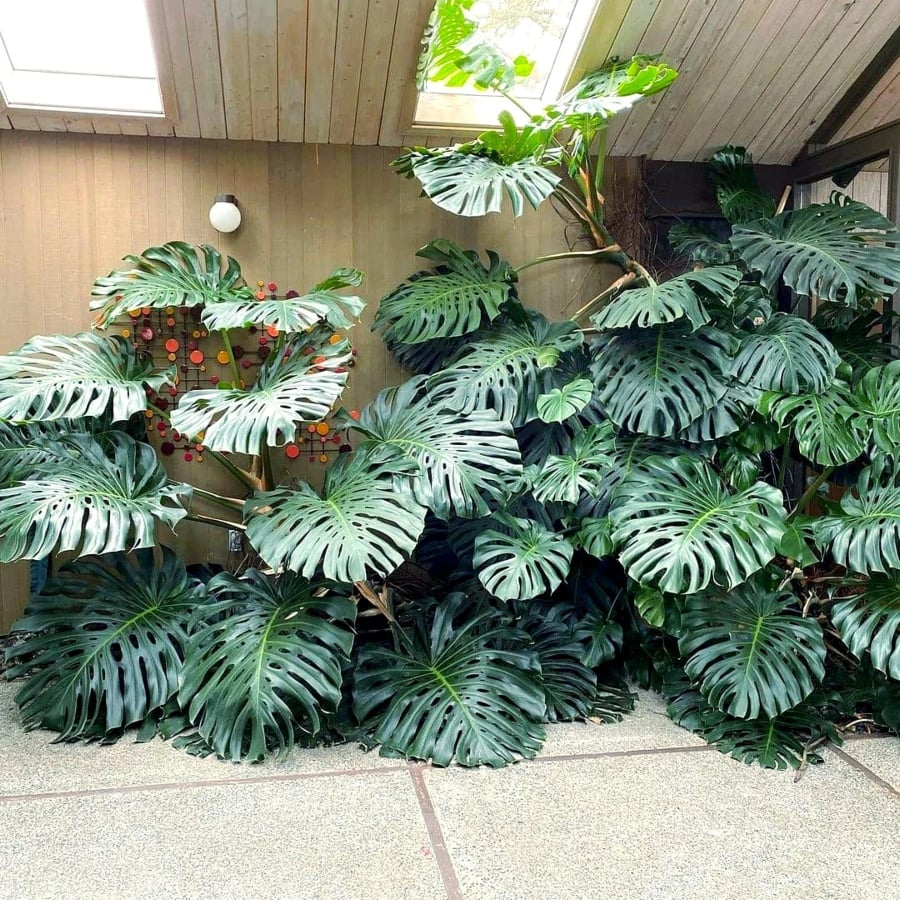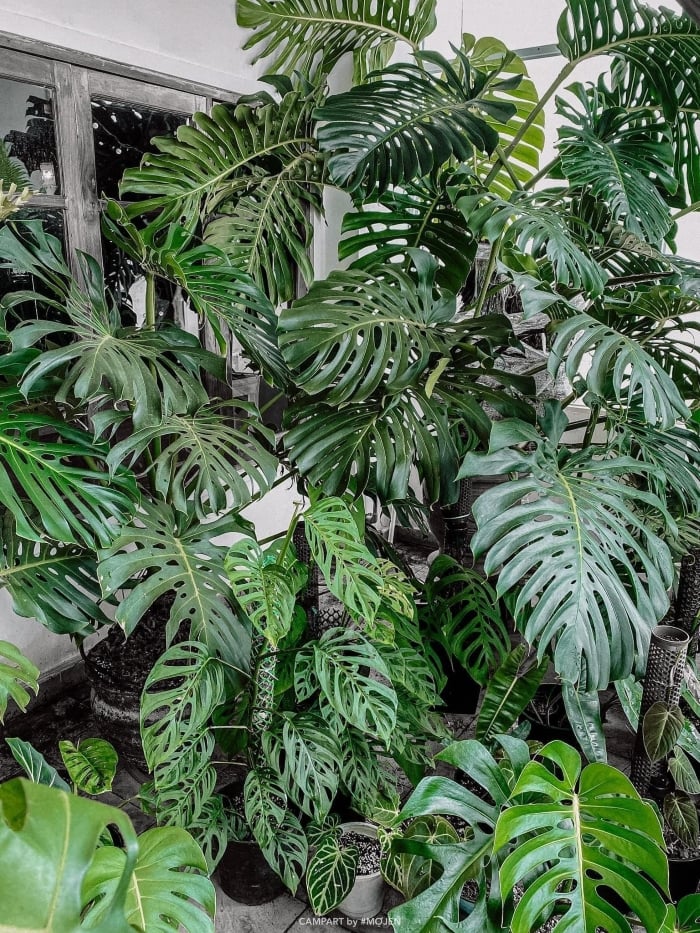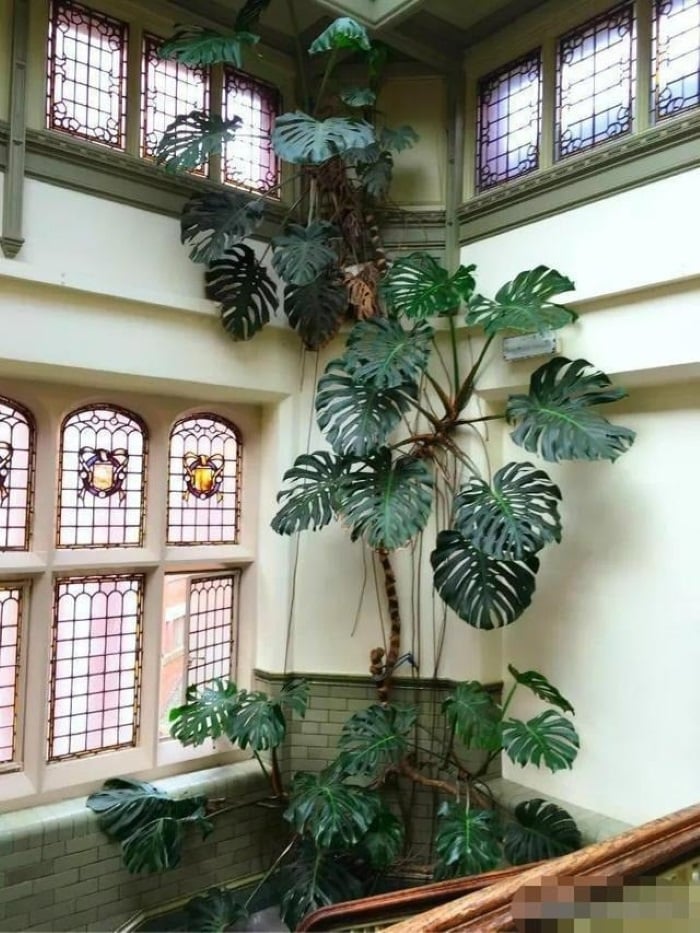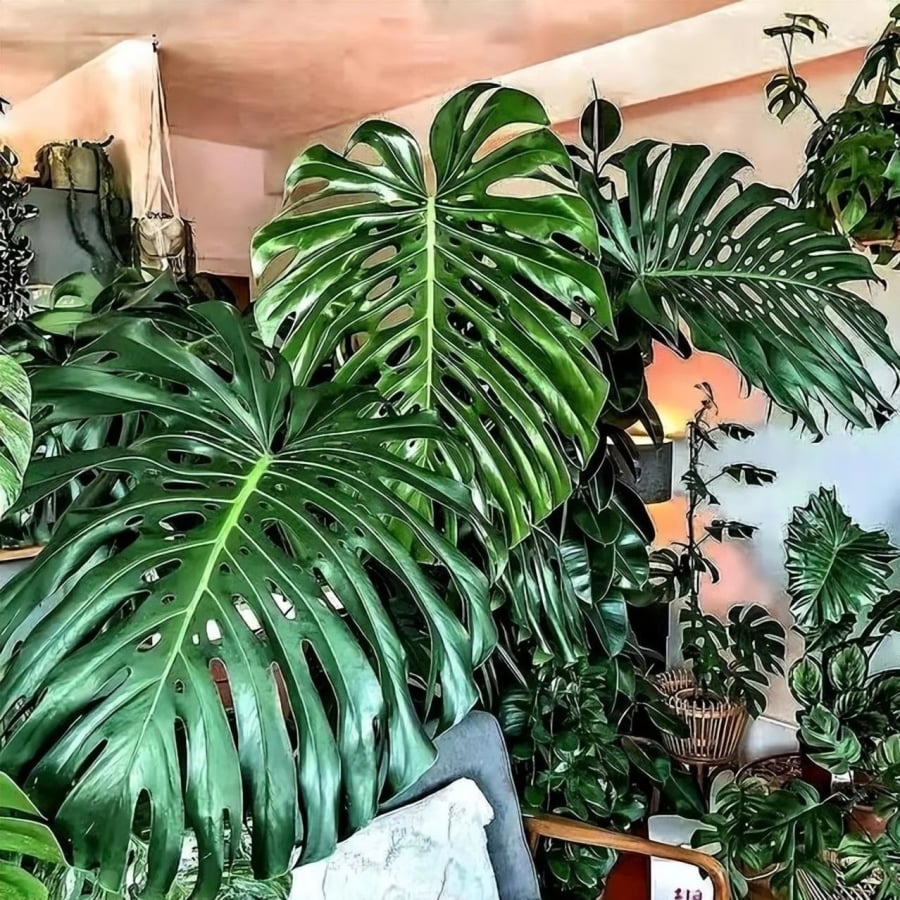The Split-leaf Philodendron has a unique and captivating allure. When grown in a small potted plant placed in the living room or dining area, it brings a fresh and vibrant aesthetic to the space.
For a larger, medium-sized pot, you can position it in a spacious living room with ample lighting and then shape it to fit your room. It will undoubtedly be an impressive focal point.

If the living environment is not to its liking, the Split-leaf Philodendron will remain content within its pot. This houseplant isn’t fond of direct sunlight, so feel free to place it in your office, living room, or any area without direct sun exposure.
However, some people believe that a large and lush houseplant like this can hinder ventilation and create an overly humid environment, which may be detrimental to one’s health. In more severe cases, it could attract mosquitoes and negatively impact the home environment.
Nonetheless, many individuals admire the sight of a massive Split-leaf Philodendron. Rest assured, you need not worry about your indoor plant suddenly growing to such proportions.
So, if you wish to encourage your Split-leaf Philodendron to attain a giant-like stature, what kind of environment should you provide?
1. Split-leaf Philodendrons thrive in high humidity
If you aspire to transform this houseplant into a towering, vigorously growing specimen, the environment plays a pivotal role.
By observing the aerial roots of the Split-leaf Philodendron, you can be certain that they require a humid environment to develop these roots and absorb moisture from the air.

These plants relish high humidity, and when provided with a warm, moist environment, they will flourish. The leaves will grow beautifully, thick, and prominently veined.
They will create a lush, verdant display, reminiscent of a tropical rainforest.
2. Split-leaf Philodendrons are heavy plants and need to be securely attached to a wall
If you envision this houseplant as a cascading waterfall, don’t underestimate its weight.
The leaves of the Split-leaf Philodendron are relatively large and tend to droop. If you aim for a substantial-sized plant, you must provide a wall or column for it to climb. Otherwise, it won’t look aesthetically pleasing when it reaches a giant size.

3. Split-leaf Philodendrons can be trained to grow in your desired direction
In reality, numerous houseplants can form cascading waterfalls. As long as they extend in one direction, their branches will naturally droop downward, creating a waterfall effect.
The Split-leaf Philodendron can be trained to grow as a waterfall and will also respond to the force of gravity, causing it to lean in a specific direction. Consequently, to guide the plant in your preferred direction and achieve an attractive appearance, some intervention is necessary.

Firstly, select an attractive location. Avoid placing the plant in direct sunlight and instead opt for partial shade or full shade.
This houseplant isn’t a fan of bright light and only requires 2-4 hours of indirect sunlight daily to photosynthesize and produce the nutrients it needs.
To guide the plant’s growth in your desired direction, try spraying water in that direction. The plant will naturally grow towards the water source.
Additionally, for improved ventilation, water the area around the plant to ensure the leaves can absorb sufficient nutrients. This will result in leaves that are vibrant and full of life, signaling the ideal time to shape the plant successfully.






























